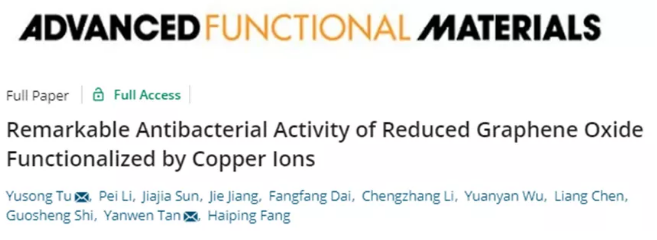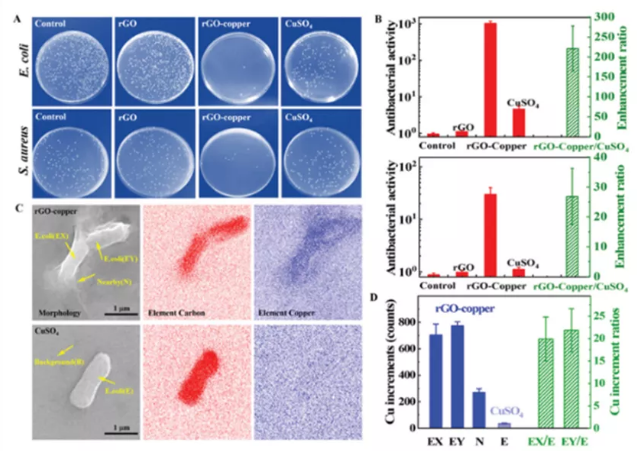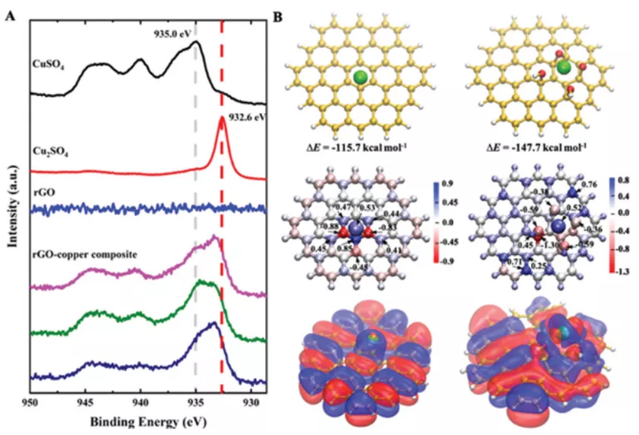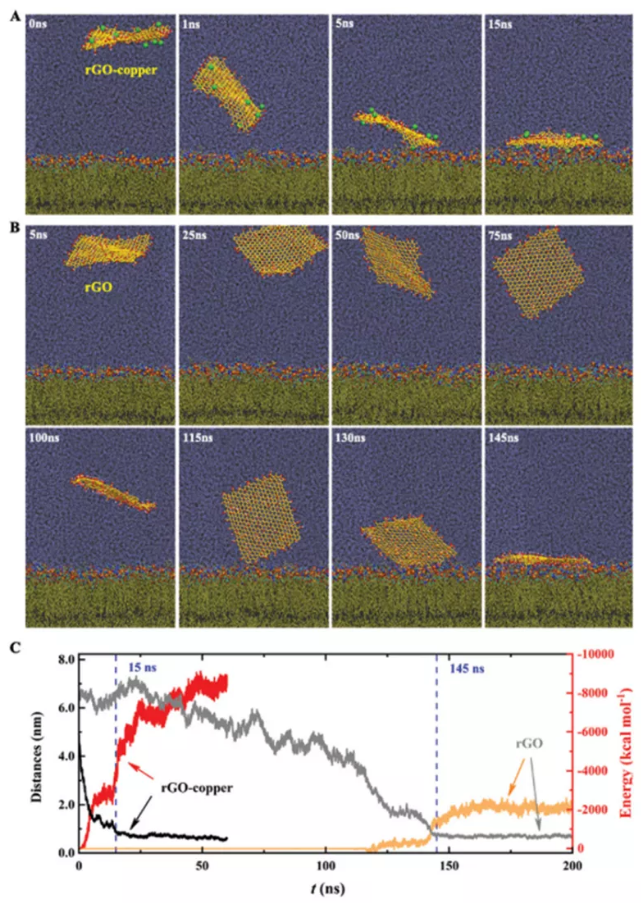
hotline:
17715390137
Tel/Wechat:
18101240246 (Technology)
0512-68565571
Email:mxenes@163.com (Sales Engineer)bkxc.bonnie@gmail.com
Scan the code to follow or search the official account on WeChat:
2D Materials Fronrier After paying attention,
click on the lower right corner to contact us,
Enter enterprise WeChat.
Professional Services Online

 The widespread use of antibacterial drugs or antibiotics in medical care and agricultural breeding has led to the emergence and spread of bacterial resistance in the environment, which will pose a certain threat to human health. As early as ancient times, copper was considered a good antibacterial material, and its ions and complexes had broad-spectrum antibacterial, antifungal and antiviral activities. However, excessive copper ions also have a certain degree of toxicity, which will cause adverse effects on the environment, especially the aquatic environment. Therefore, how to selectively enhance antibacterial activity while minimizing its harm to the environment is a crucial issue for improving human and animal health and increasing agricultural production.
The widespread use of antibacterial drugs or antibiotics in medical care and agricultural breeding has led to the emergence and spread of bacterial resistance in the environment, which will pose a certain threat to human health. As early as ancient times, copper was considered a good antibacterial material, and its ions and complexes had broad-spectrum antibacterial, antifungal and antiviral activities. However, excessive copper ions also have a certain degree of toxicity, which will cause adverse effects on the environment, especially the aquatic environment. Therefore, how to selectively enhance antibacterial activity while minimizing its harm to the environment is a crucial issue for improving human and animal health and increasing agricultural production.
Professor Tu Yusong of Yangzhou University, Professor Tan Yanwen of Fudan University and others discovered that reduced graphene oxide (rGO) modified by Cu ions can exhibit selective antibacterial activity, and the modified performance is significantly higher than that of intrinsic rGO and higher than Cu ions. Two orders of magnitude, and it is not toxic to mammalian cells. Through the interaction between Cu ions and graphene π bonds, rGO can effectively adsorb Cu ions, resulting in an extremely low concentration of Cu ions in the surrounding environment (less than 0.5 μM). At the same time, the Cu modified on the rGO is positively charged and can be well combined with negatively charged bacterial cells, thereby selectively achieving antibacterial effects. rGO can accurately and quickly transfer Cu ions and assemble them on bacterial cells, resulting in the reduction of the valence state of Cu ions from +2 to +1, which enhances the antibacterial performance. In addition, this rGO-Cu composite exhibits algaecidal activity and is not toxic to electrically neutral mammalian cells. The research was published in Advanced Functional Materials as a paper entitled "Remarkable

Antibacterial Activity of Reduced Graphene Oxide Functionalized by Copper Ions". [Significant antibacterial activity of rGO-Cu] The author added a small amount of rGO suspension (40 μg/mL rGO and 100 μM CuSO4) to the copper sulfate solution, and the colony experiment results showed that the composite solution has excellent antibacterial activity (Figure 1A) , While rGO itself provides almost no antibacterial effect. Therefore, the rGO-Cu composite solution has stronger antibacterial activity than the rGO solution itself. In addition, the antibacterial activity of the rGO-Cu composite is at least 220 times higher than the antibacterial activity of the surrounding copper ions in the solution, an increase of two orders of magnitude (Figure 1B). The author measured the copper ions remaining in the solution and found that the concentration of the surrounding copper ions is very low, less than about 0.5 μM, which indicates that rGO can strongly adsorb copper ions and form rGO-Cu composite materials without adversely affecting the environment .


Figure 2 The phase between rGO and copper ions and rGO-Cu

Interaction Figure 3 The interaction between rGO-Cu and bacterial cell membrane [Algicidal activity and cytotoxicity of rGO-Cu] In addition to bactericidal activity, the author also verified the algicidal activity of rGO-Cu. Fluorescein diacetate (FDA) analysis results show (Figure 4A) that rGO has almost no algae killing activity. In contrast, only one live cell stained with FDA was observed in the rGO-Cu sample, which indicates that the algaecidal activity of the complex is much stronger than that of rGO itself, and is about 26 times that of the surrounding copper ions (Figure 4B). For biomedical applications, it is important to check the cytotoxicity of rGO-Cu to mammalian cells. As shown in Figure 4C and D, both rGO and rGO-Cu have no cytotoxicity to mammalian cells (human embryonic kidney 293T). Although studies have shown that high concentrations of copper ions (> 103 μM) can damage mammalian cells, in this study, despite the strong adsorption of copper ions by rGO, the local copper ion concentration on rGO-Cu is very high. Since mammalian cells are usually electrically neutral, the copper ions in rGO-Cu will not be preferentially delivered and assembled on mammalian cells.

Figure 4 Summary of the algicidal activity of rGO-Cu and its cytotoxicity to mammalian cells: The rGO-Cu composite material reported in this study makes full use of the charge difference between cells to achieve significant selective antibacterial activity. Avoid environmental hazards, which provides guidance for the design of materials with high efficiency and selective antibacterial activity. In addition, the antibacterial and algicidal activity of the rGO-Cu composite material, and its inherent broad-spectrum antibacterial physical mechanism, make it expected to become a new generation of cheap, efficient, broad-spectrum, environmentally friendly, and easy-to-produce antibacterial agents.

| Reminder: Beijing Beike New Material Technology Co., Ltd. supplies products only for scientific research, not for humans |
| All rights reserved © 2019 beijing beike new material Technology Co., Ltd 京ICP备16054715-2号 |